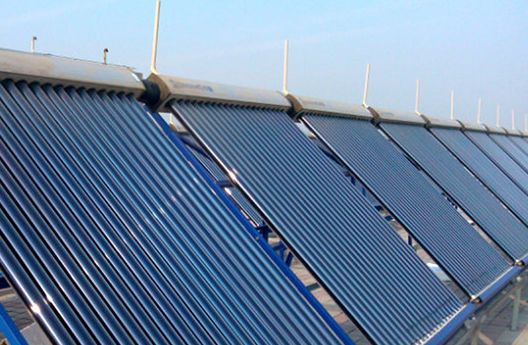Of the $144 million in foreign investment in solar photovoltaic power plants in Pakistan, $125 million is currently coming from China, nearly 87 percent of the total.
Of Pakistan’s 530 MW total electricity generation, 400 MW (75%) is from Quaid-e-Azam Solar Power Plant, Pakistan’s first solar-capable power plant owned by the Government of Punjab and owned by China TBEA Xinjiang New Energy Company Limited .
The plant, with 400,000 solar panels spread across 200 hectares of flat desert, will initially provide Pakistan with 100 megawatts of electricity. With 300 MW of new generation capacity and 3 new projects added since 2015, AEDB reported a large number of planned projects for the Quaid-e-Azam solar power plant with a total capacity of 1,050 MW, according to China Economic Net. (middle).
Chinese companies are also major suppliers of many PV projects in Pakistan such as KP’s Small Solar Grid and ADB’s Clean Energy Program.
Solar microgrid facilities in the Jandola, Orakzai and Mohmand tribal areas are in the final stages of completion, and businesses will soon have access to uninterrupted, cheap, green and clean energy.
To date, the average utilization rate of commissioned solar photovoltaic power plants is only 19%, far below China’s over 95% utilization rate, and there are huge opportunities for exploitation. As seasoned investors in Pakistan’s photovoltaic power plants, Chinese companies are more likely to leverage their experience in the solar industry further.
They could also benefit from China’s commitment to moving away from coal and promoting clean energy in developing countries.
Meanwhile, the Government of Pakistan has set ambitious targets for solar PV capacity under the Integrated Power Generation Expansion Plan (IGCEP) through 2021.
Thus, Chinese companies can count on the support of the government to invest in solar photovoltaic power plants in Pakistan, and the cooperation will complement the commitment of the two countries to the socio-economic development of the entire region.
In Pakistan, electricity shortages have led to surges in electricity prices and foreign exchange spending on imported energy, exacerbating the country’s need for self-sufficiency in electricity generation.
Solar microgrid facilities in Jandola, Orakzai and Mohmand tribal areas are in the final stages of completion
At present, thermal energy still makes up the bulk of Pakistan’s energy mix, accounting for 59% of the total installed capacity.
Importing the fuel used in most of our power plants places a heavy burden on our treasury. That’s why we thought for a long time that we should focus on the assets that our country produces.
If solar panels were installed on every roof, those with heating and load shedding could at least generate their own electricity during the day, and if excess electricity was generated, they could sell it to the grid. They can also support their children and serve aging parents, Minister of State (Oil) Musadiq Masoud Malik told CEN.
As a fuel-free renewable energy source, solar PV systems are significantly more economical than imported energy, RLNG and natural gas.
According to the World Bank, Pakistan only needs 0.071% of its total area (mostly in Balochistan) to realize the benefits of solar energy. If this potential is exploited, all of Pakistan’s current energy needs could be met by solar energy alone.
The strong upward trend in solar energy consumption in Pakistan shows that more and more companies and organizations are catching up.
As of March 2022, the number of AEDB certified solar installers has grown by approximately 56%. Net metering of solar installations and electricity generation increased by 102% and 108%, respectively.
According to KASB analysis, it represents both government support and consumer demand & supply. According to KASB analysis, it represents both government support and consumer demand & supply. According to KASB’s analysis, this represents both government support and consumer demand and supply. According to the KASB analysis, it represents both government support and consumer demand and supply. Since the end of 2016, solar panels have been installed in 10,700 schools in Punjab and over 2,000 schools in Khyber Pakhtunkhwa.
The total annual savings for schools in Punjab from installing solar power is about 509 million Pakistani rupees ($2.5 million), which translates into annual savings of about 47,500 Pakistani rupees ($237.5) per school.
Currently, 4,200 schools in Punjab and more than 6,000 schools in Khyber Pakhtunkhwa are installing solar panels, KASB analysts told CEN.
According to the Indicative Generating Capacity Expansion Plan (IGCEP), in May 2021, imported coal accounted for 11% of total installed capacity, RLNG (regasified liquefied natural gas) for 17%, and solar energy for only about 1%.
Dependence on solar energy is expected to increase to 13%, while dependence on imported coal and RLNG is expected to decrease to 8% and 11% respectively.
Post time: Oct-14-2022
